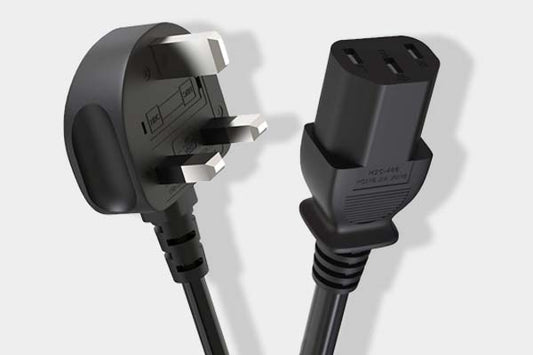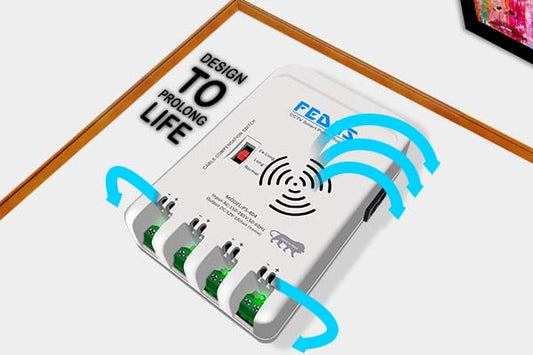Recognizing IEC Power Cables: A Complete Guide
Introduction:
In the field of electrical technology and engineering, having a solid knowledge of power cables is important to maintaining both their safety and their efficacy. Power cables produced by the International Electrotechnical Commission (IEC) stand out among the many different kinds of cables that are available because of their continuously high level of reliability and universal standards. This complete guide looks into the value of IEC cables, their various types, the most typical applications for them, the requirements, the different types of connectors, and the benefits of using custom solutions.
What is an IEC Cables?
In IEC cables represent uniform power cables produced by the International Electrotechnical Commission, an organization that develops and communicates worldwide standards for electrical, electronic, and similar technologies. These cables provide flexibility and safety among various devices and systems, rendering them important in both industrial and consumer electronics.
IEC cables are engineered to transmit electrical power, identified by their different connector designs and defined specifications. They often feature in equipment requiring a stable power supply, offering a secure method to link devices to power sources.
Why do you need one?
The requirement for IEC cables develops from their safety and established qualities. Here are few reasons for their requirement:
- Safety: IEC cables are engineered to reduce dangers related to electrical connections. Their design includes protection and designated ratings to protect against overheating and electrical problems.
- Compatibility: These cables are universally compatible with many devices and manufacturers, providing simple connection among equipment.
- Processing: IEC cables are designed to support specific current as well as voltage ratings, providing reliable power delivery without affecting device performance.
- Usability: IEC cables, featuring standardized connectors, provide quick and simple connectors, therefore reducing setting up and maintaining them.
Types of Varieties of IEC Cables:
Many different kinds and designs of IEC power cables exist to satisfy particular technical needs and applications. Here are some common items together with their basic requirements:
- IEC C13 to C14 Connector: These are primarily utilized for computer displays, desktop PCs, and other devices, including printers. Their present rating is 10 A, with a voltage rating of 250 V.
- IEC C15 to C16 Connector: These cables, with a limit temperature of 120°C, work well for elevated-temperature locations including those near tea kettles or heating pumps. The maximum electrical capacity is 10 A, and the voltage must not be above 250 V.
- IEC C19 to C20 Connector: This cable type is usually used by high-power machinery, that includes computers or data center equipment, supporting currents up to 16 A and voltages reaching 250 V.
- IEC C5 to C6 Connector: commonly referred to as "cloverleaf" connectors, these cables provide connections between computers and certain projectors, among other equipment. Their present rating is around 2.5 A, while the voltage should fall within the range of 250 V.
Each IEC cable variant fulfills different purposes while conforming to international safety requirements. This indicates that no matter the kind selected, its design has been specified to fulfill the required technological specifications for secure connectivity in any application where it may be reliably utilized.
Common Use of IEC Cables:
An IEC cables have applications in various sectors, including:
- Computers and IT Equipment: Usually utilized for linking PCs, servers, and devices to power supplies.
- Home Appliances: Present in appliances like refrigerators, microwaves, and televisions, facilitating secure power transmission.
- Industrial Equipment: Applied in industrial and manufacturing facilities when machinery requires reliable electrical connections.
- Medical Devices: Important in healthcare environments, where reliable electricity is vital for life-support and monitoring devices.
The flexibility of IEC cables provides them a perfect match for an extensive selection of applications.
The Important of AWG in Power Cables:
AWG, or American Wire Gauge, is an accepted standard for measuring the diameter of electrical wires. recognizing AWG is necessary while choosing IEC power cables due to the following reasons:
- Current Bearing Capacity: Various AWG sizes are suitable for different current levels. Selecting the correct size ensures that the cable will suit the device's power requirements without risk of heating.
- Voltage Decrease: Wires with greater depth (lower AWG numbers) exhibit less resistance, therefore minimizing voltage drop over extended distances, which is vital to keeping device efficiency.
- Safety: Using a suitable AWG mitigates the dangers of electrical fires and fails to function, thereby improving overall safety.
Common IEC Power Connector Types:
Benefits of Custom IEC Cables
While common IEC cables fulfill many requirements, custom IEC cables provide specialized solutions for specific uses. The benefits include:
- Customized Specifications: Custom cables can be built to satisfy specific voltage, current, and environmental specifications, providing best performance.
- Length Options: You can indicate the exact length that is needed, decreasing excess cable to improve organization.
- Integration of Connectors: Custom cables may incorporate various connector types for sure compatibility with particular devices.
- Improved Resilience: These cables can be engineered using specialized materials and structure to withstand serious conditions, including high temperatures and exposure to chemicals.
- Opportunities for Branding: Cultural custom cables can be customized with logos or colors, improving professional features and identification of the company.
Conclusion:
In conclusion, analyzing IEC power cables is crucial for everyone working in electrical engineering, technology, or device production. IEC cables are required for reliable power transmission across devices and industries because of its standards, safety features, diverse applications, and connection types.
Using the right IEC cable, whether standard or unique, can improve the safety, efficiency, and performance of your electrical systems. Use the flexibility and durability of IEC cables to make sure that your power connections conform to the highest standards.
Writer - Vishal Singh


























